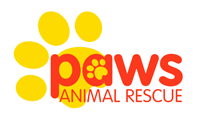Teaching your dog impulse control
Many dogs can struggle to control their impulses. Particularly, working breed dogs or smaller, robust breeds. Essentially, any dog instinctually reacts easily to stimulus and working from the anticipation part of their brain – this is called provoked arousal . Arousal and impulsive behaviours work really well for many dogs, it is what makes them such good working dogs, whether it is a labrador Retrieving ducks from a lake, a border collie herding sheep or a German shepherd working for the police.
However, for dogs that have a high state arousal, if it is not channelled into positive outlets with training and play, they can also get frustrated easily, have a lack of impulse control, over-excitement, boredom or fear. This can all potentially develop into undesirable behaviours in our dogs, like fear of strangers in their house or barking excessively.
The best way to help your dog control their impulses and manage that high state of arousal better is to teach them to do something more positive instead. For example, for a dog that jumps when greeting people, it is beneficial to teach the dog to do something else, like “sit” or “down”, in the presence of others instead.
Incorporating slow feeders at meal times or asking our dogs to “sit” before putting down their meal can help teach your dog to pause before acting impulsively.
However, some high drive dogs can find staying stationary frustrating and this can cause further issue. For dogs that love to be moving, play can be the best way to help control their impulses. If your dog barks at passers-by in the garden. Playing games like tug of war or fetch in the garden can actually have a positive effect and teach them how to ignore people passing by. Instead, they no longer feel fear or frustration at people outside their garden but have a positive association instead, as passers-by now mean play time and games and means something positive to them.
For dogs in states of arousal that lose food motivation and won’t take treats for training out on walk, carrying a favourite toy or flirt pole to use when you need then to focus or ignore other dogs and people in the park can be a beneficial way to keep them motivated for training.
These methods counter condition your dog from thinking something is scary, stressful or boring to something positive and instead of acting on impulse, channel that state of arousal towards you for direction and what to do in that instant.




